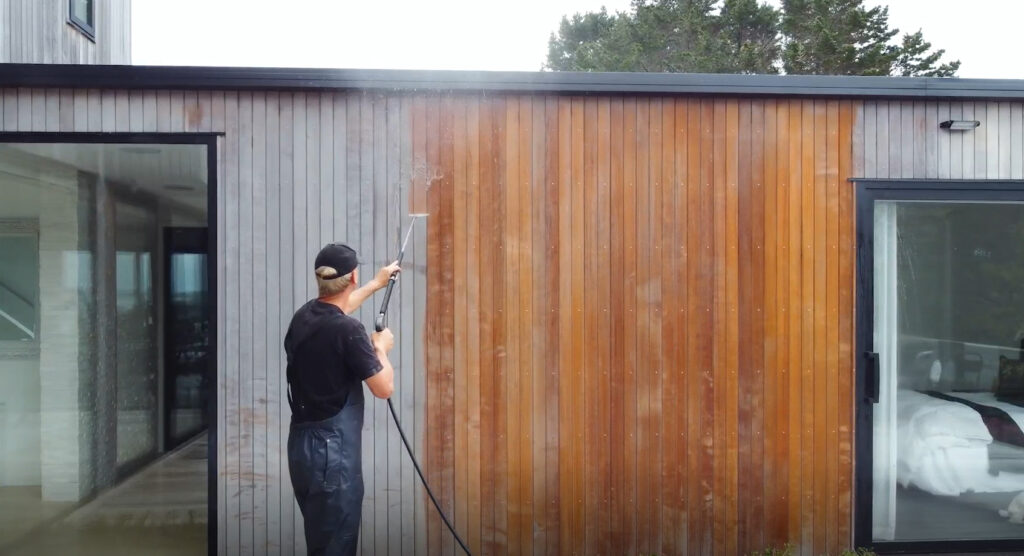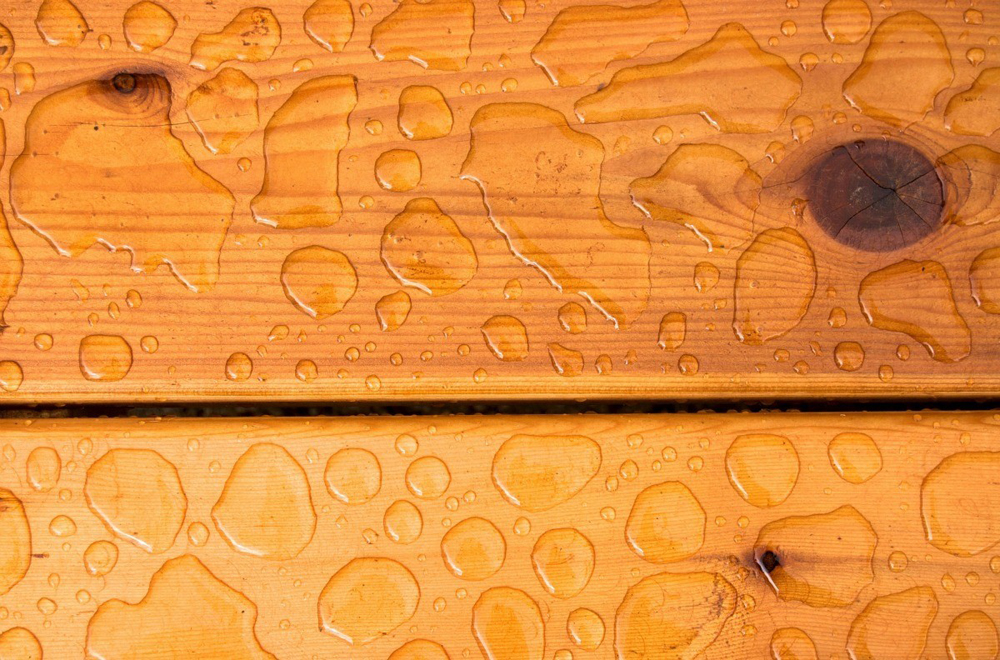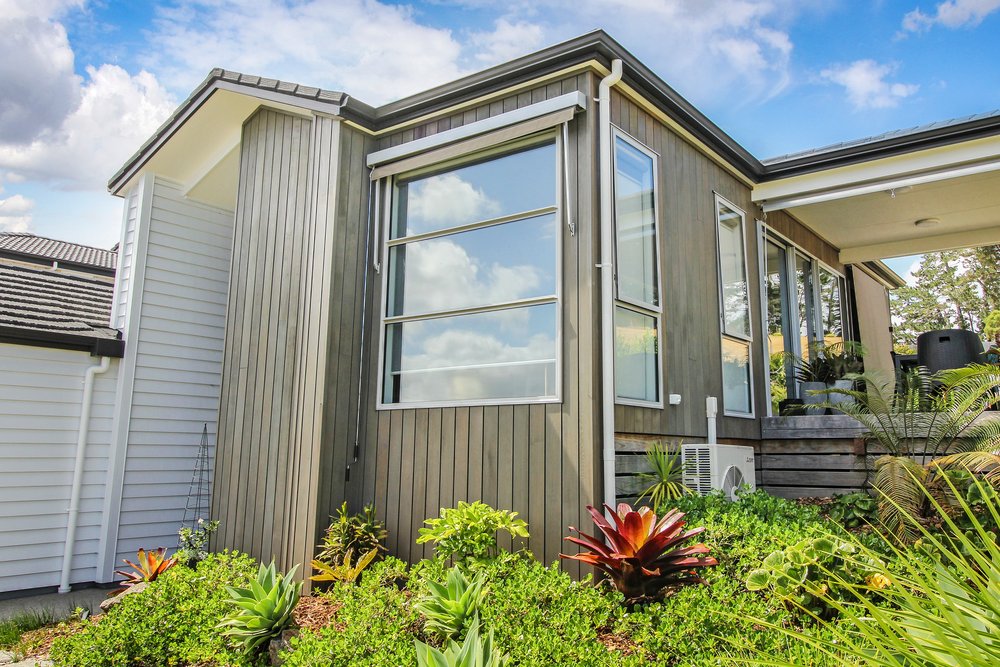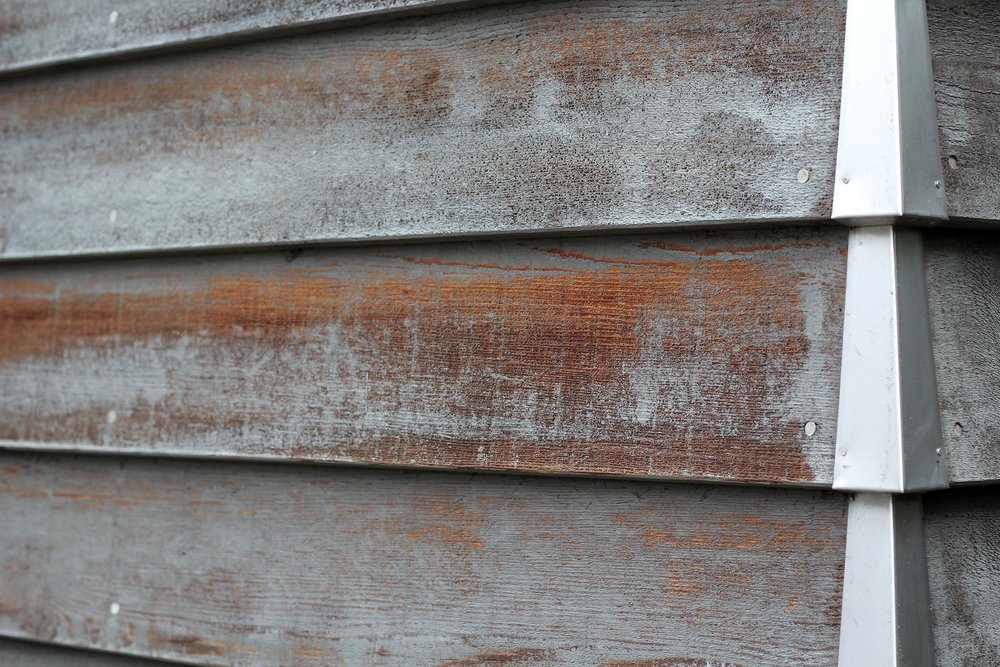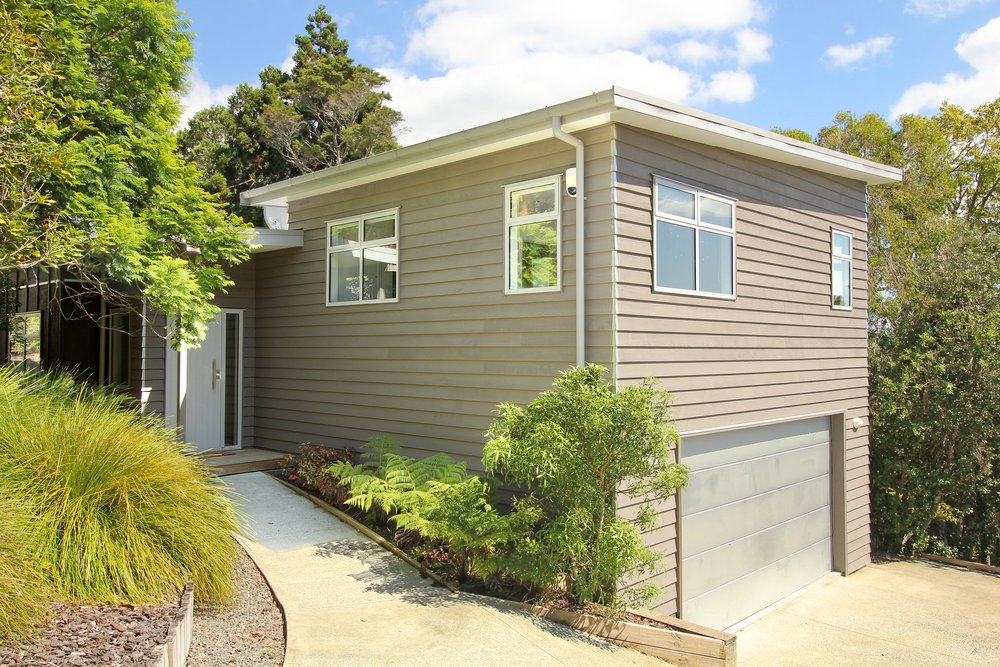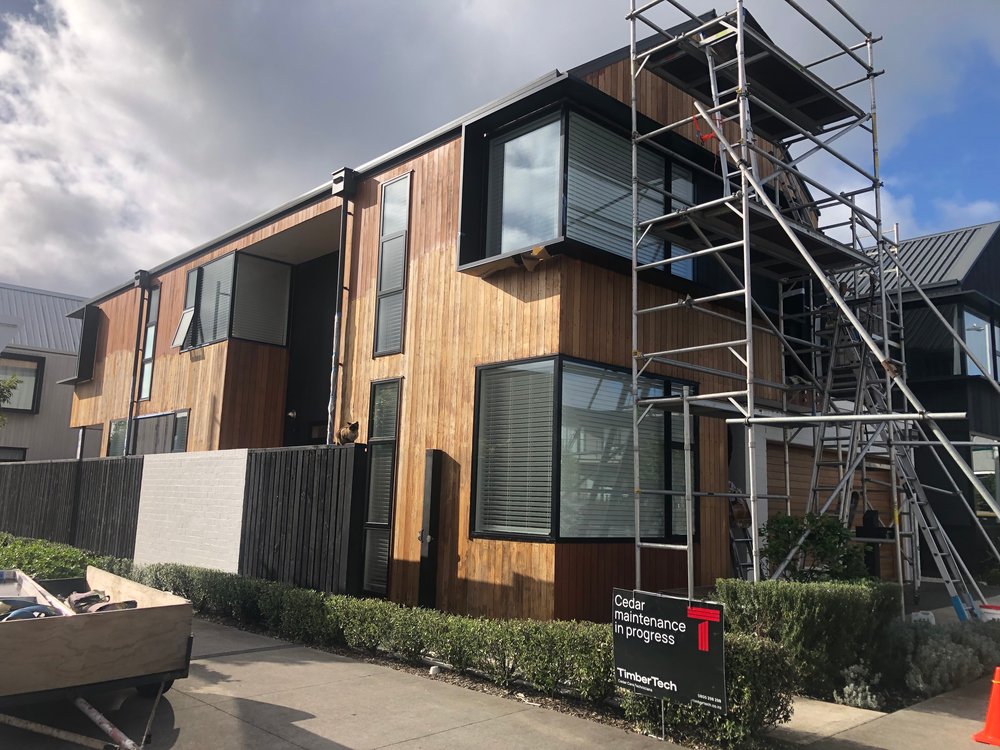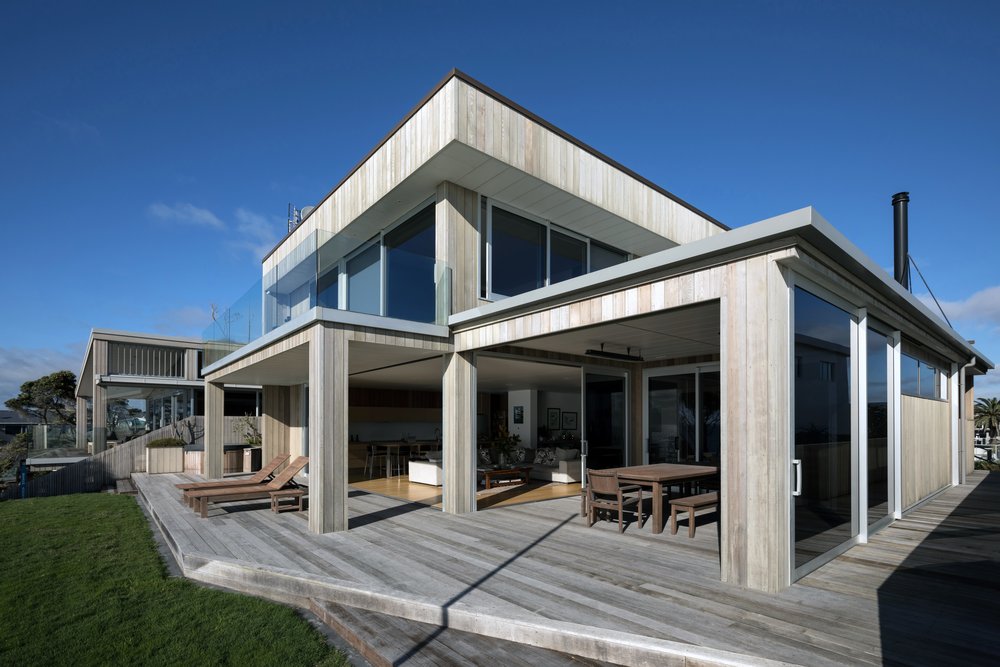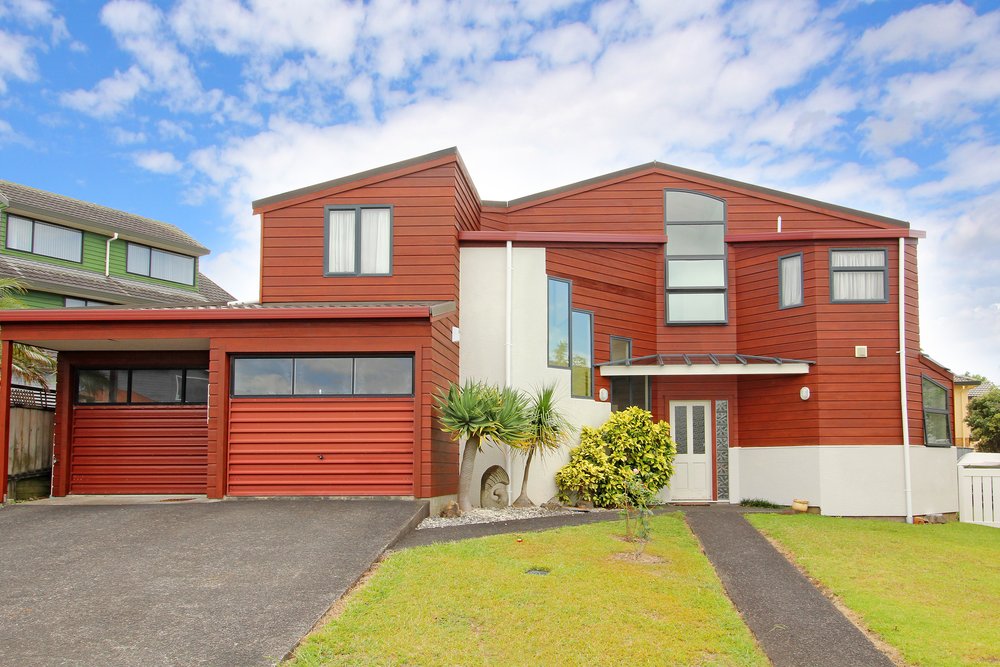One of the most common questions we get asked is “Can I get my Cedar maintained in the winter?”
Absolutely! With winter, comes rain…but not as much as you might think.
At the height of the wet season, there are 19.1 rainy days in June and 20 in August. In summer, there are 14.1 rainy days in December and 9.8 days in February. That’s only 6-10 days difference.
Yes, Auckland is a rainy place! But we’ve been looking after Cedar for 12 months of the year, for over 30 years, and rain isn’t as big of a problem as you might think.
This comes down to the unique properties of Cedar and how we care for it.
Oil and Stain Are Not Paint
The statement above may seem obvious, but the idea of paint drying is so fixed in our collective minds that people often make the comparison.
Aside from both being applied to walls, they couldn’t be more different products.
Paint is applied by building a film on the surface of another film, which then must dry and cure.
Stain and oil penetrate into the pores of the Cedar and start providing protection against moisture almost immediately.
You could even spray the boards lightly with a hose 20-30 minutes after application and it would make no difference to the finish.
How Wet is Wet?
Similarly, in most people’s minds, when a board gets wet, it is wet the whole way through. This is only what our eyes are telling us.
In truth, it’s only the surface that gets wet (usually the top 1mm), the rest of the board stays perfectly dry.
To apply a Cedar coating, we only need the surface of the board to dry out. Depending on exposure to the sun, wind and air temperature, this can happen anywhere between 5 – 30 minutes.
You can feel whether Cedar it is dry or not by touching the boards. If the surface is too wet, we simply do not apply the coating.
Mark likes to use the analogy of hanging out washing. If you are happy to put out your washing to dry, you can coat Cedar.
And if a spattering of rain does get onto the surface, the oil or stain is already working to create a barrier against moisture.
What Happens if it Does Rain?
Every morning, the Senior Technicians assigned to the job will look at the weather and work with the Production Manager to make the call. In most cases, the decision has been made the previous day.
Our scheduling team also looks at the weather in advance and plans accordingly. If rainy weather is on the way, they will book in other work such as washing or adapt the scheduled work to the conditions.
If the weather is inclement, the technicians can focus on areas of the house away from the wind and rain.
If the weather is coming from the north, we can coat the areas on the south, or undercover areas.
If rain is truly setting in, we can wash the Cedar in preparation for coating. During periods of persistent rain, there can be a gap of 1-2 weeks between washing and coating, but this could be left up to 6 weeks without any issues.
So, When is the Best Time to Coat?
The answer is always now. If you ask us in 6 weeks or 6 months, the answer will be the same.
We are battling the sun here, and the sun always wins. New Zealand’s harsh UV rays are constantly sucking the natural tannins from the boards and they need to be coated to protect against the wet-dry-wet effect.
If left longer than the recommended 2-3 summers, the surface can begin to roughen and create a toe-hold for mould and lichen, resulting in an unkempt look.
This isn’t scaremongering. If you leave them for another 6 months, the difference is almost indiscernible. But that doesn’t change the fact that there is no “best time” for Cedar maintenance.
The best time is always now. You just need to pick your days.
Final Thoughts
We have been doing this for over 30 years and know our way around a bit of rain.
If the boards are dry, we can coat them. Once we get to the point where the boards are wet and will not dry, we stop. Simple as that.
Don’t let the idea of rain put you off getting your Cedar maintained and protected. Winter is just as good as summer, and autumn is just as good as spring. The sun never stops and neither do we!


